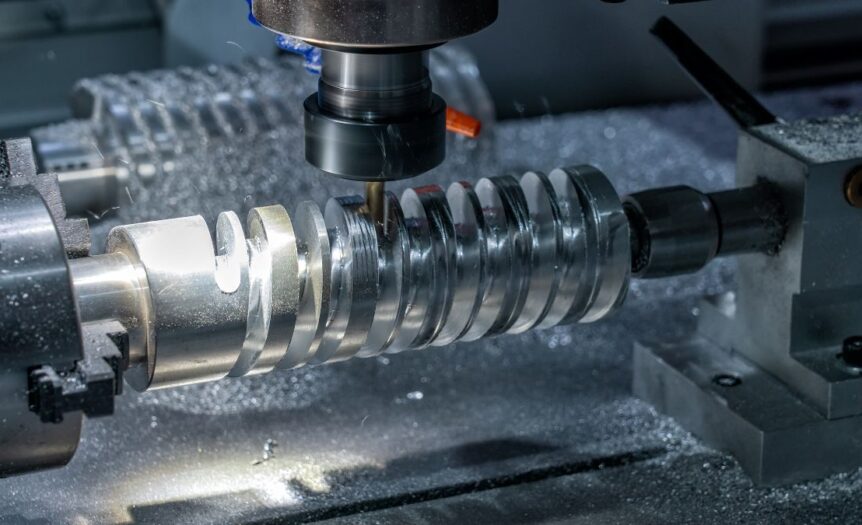If you’re a machinist, you know how important it is to thread mill accurately. Thread milling is one of the most versatile operations in the machining industry, and it’s used in a wide range of applications. However, threading can be challenging, especially if you’re new to the process. We’ll provide you with tips for mastering the art of thread milling.
Choose the Right Thread Mill
When it comes to thread milling, choosing the right thread mill is crucial. There are different types of thread mills, and each type is designed for a specific application. You must choose the right thread mill for the job. Consider the material you’re machining, the hole size, and the thread size, then select a thread mill compatible with your requirements. Ideally, opting for a high-quality thread mill is best because it will offer better accuracy, performance, and durability.
Pay Attention to Your Speeds and Feeds
Speeds and feeds play a crucial role in thread milling. The right feeds and speeds ensure the thread mill cuts the material accurately and efficiently. Conversely, the wrong feeds and speeds can cause problems like broken tools, wear and tear, and poor thread quality. To determine the right speeds and feeds, you need to consider factors like the material you’re machining, the thread size, the depth of cut, and the spindle speed. Use a thread milling calculator or consult the manufacturer’s recommendations to optimize your speeds and feeds.
Use the Right Coolant
Coolant is essential for thread milling because it lubricates the tool and prevents heat buildup. However, not all coolants are created equal. Some coolants are better suited for thread milling than others. For example, tapping fluids are generally unsuitable for thread milling because they tend to cause chip buildup. Instead, opt for a better alternative, like emulsion or synthetic coolants. These coolants provide excellent lubricity and cooling properties and are more effective at evacuating chips.
Mind Your Chip Evacuation
Proper chip evacuation is another critical factor in thread milling. Chips accumulating around the tool can cause problems like tool breakage, workpiece damage, and poor thread quality. To ensure effective chip evacuation, use an appropriate coolant and keep the tool clear of chips. You can also use cutting oil or compressed air to dislodge chips from hard-to-reach areas.
Practice Good Machining Techniques
Finally, you need to practice successful thread milling techniques. This means paying attention to details like tool alignment, depth of cut, and machine rigidity. Ensure your machine is properly calibrated and that you’re operating within the recommended parameters. Additionally, be sure to use proper clamping and fixturing to prevent workpiece movement during machining. Remember that thread milling is a complex process that requires precision and attention to detail.
Thread milling is a versatile and essential operation for many machinists. Mastering the art of thread milling takes time, effort, and practice. However, following these five tips can improve your thread milling skills and produce accurate and high-quality threads. With these tips, you’ll be on your way to becoming a thread-milling expert in no time!










 Deering Estate
Deering Estate
 Massage Envy South Miami
Massage Envy South Miami
 Calla Blow Dry
Calla Blow Dry
 My Derma Clinic
My Derma Clinic
 Sushi Maki
Sushi Maki
 Sports Grill
Sports Grill
 The Healthy Kitchen
The Healthy Kitchen
 Golden Rule Seafood
Golden Rule Seafood
 Malanga Cuban Café
Malanga Cuban Café

 Kathleen Ballard
Kathleen Ballard
 Panter, Panter & Sampedro
Panter, Panter & Sampedro
 Vintage Liquors
Vintage Liquors
 The Dog from Ipanema
The Dog from Ipanema
 Rubinstein Family Chiropractic
Rubinstein Family Chiropractic
 Your Pet’s Best
Your Pet’s Best
 Indigo Republic
Indigo Republic




 ATR Luxury Homes
ATR Luxury Homes


 2112 Design Studio
2112 Design Studio
 Hamilton Fox & Company
Hamilton Fox & Company
 Creative Design Services
Creative Design Services
 Best Pest Professionals
Best Pest Professionals
 HD Tree Services
HD Tree Services
 Trinity Air Conditioning Company
Trinity Air Conditioning Company
 Cisca Construction & Development
Cisca Construction & Development
 Mosquito Joe
Mosquito Joe
 Cutler Bay Solar Solutions
Cutler Bay Solar Solutions


 Miami Royal Ballet & Dance
Miami Royal Ballet & Dance
 Christopher Columbus
Christopher Columbus
 Pineview Preschools
Pineview Preschools
 Westminster
Westminster
 Carrollton
Carrollton
 Lil’ Jungle
Lil’ Jungle
 Frost Science Museum
Frost Science Museum
 Palmer Trinity School
Palmer Trinity School
 South Florida Music
South Florida Music
 Pinecrest Orthodontics
Pinecrest Orthodontics
 Dr. Bob Pediatric Dentist
Dr. Bob Pediatric Dentist
 d.pediatrics
d.pediatrics
 South Miami Women’s Health
South Miami Women’s Health

 The Spot Barbershop
The Spot Barbershop
 My Derma Clinic
My Derma Clinic




 Miami Dance Project
Miami Dance Project

 Rubinstein Family Chiropractic
Rubinstein Family Chiropractic
 Indigo Republic
Indigo Republic

 Safes Universe
Safes Universe
 Vintage Liquors
Vintage Liquors
 Evenings Delight
Evenings Delight





 Atchana’s Homegrown Thai
Atchana’s Homegrown Thai
 Baptist Health South Florida
Baptist Health South Florida

 Laser Eye Center of Miami
Laser Eye Center of Miami
 Visiting Angels
Visiting Angels
 OpusCare of South Florida
OpusCare of South Florida

 Your Pet’s Best
Your Pet’s Best





 HD Tree Services
HD Tree Services
 Hamilton Fox & Company
Hamilton Fox & Company


 Creative Design Services
Creative Design Services